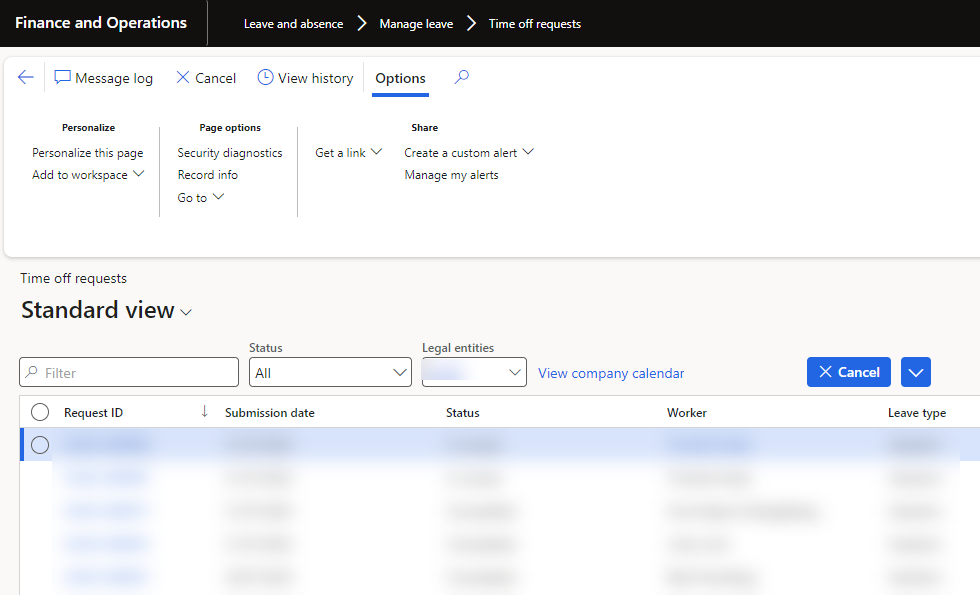5 Powerful Leave Management Features in Microsoft Dynamics 365 You Should Know

In the modern workplace, the administrative burden of managing employee leave is more than just a logistical challenge—it's a strategic imperative. Cumbersome, manual processes lead to errors, employee frustration, and valuable HR time lost to tedious data entry and endless email chains. The shift to hybrid and remote work has only amplified these complexities, making a centralized, intelligent system not just a luxury, but a necessity.
Enter Microsoft Dynamics 365 Human Resources. More than just a backend database, it is a comprehensive platform that redefines the employee experience from hire to retire. At the heart of this experience lies its powerful leave and absence management module. While it handles the basics flawlessly, its true power is unlocked through features designed to automate, integrate, and illuminate. Here are five powerful leave management features in Dynamics 365 that you should know, each contributing to a more efficient, transparent, and engaged organization.
1. Automated, Configurable Workflows for Seamless Approval Chains
The traditional method of leave requests—an email to a manager, who then forwards it to HR, who then checks a spreadsheet and replies—is a recipe for delays and disorganization. Dynamics 365 eliminates this chaos with robust, configurable workflows.
This feature allows you to design and automate the entire leave request journey. An employee submits a request through the self-service portal, which automatically triggers a notification to their manager. The manager can approve or deny the request with a single click directly from their email or within the system. Once approved, the workflow can automatically update the central leave calendar, notify the employee, and even inform relevant team members or project managers—all without a single manual intervention from HR.
Why it’s powerful: Automation drastically reduces administrative overhead, minimizes the risk of human error, and ensures policy consistency. You can create multi-tiered approval chains for extended leaves, require different approvers based on the department or leave type, and set up escalations if a request isn't actioned within a set timeframe. This creates a seamless, auditable, and efficient process that respects everyone’s time.
2. Comprehensive Employee Self-Service Portal
Empowering employees is a cornerstone of modern HR, and Dynamics 365’s self-service portal is a prime example. This feature moves beyond simply submitting requests; it provides a single, transparent hub for all things related to time off.
Employees can easily view their remaining leave balances in real-time, broken down by type (e.g., vacation, sick, personal). They can submit new requests, see the status of pending requests, and access a full history of their past absences. The interface is intuitive and integrated directly into the broader Leave Management D365 Solutions environment, making it a natural part of their daily digital workflow.
Why it’s powerful: This transparency and empowerment significantly boost employee satisfaction and reduce the number of routine queries directed at managers and HR. Employees no longer have to wonder how much time off they have left or where their request is stuck. By giving them direct control and visibility, you foster a culture of trust and accountability, freeing HR to focus on more strategic initiatives rather than acting as an information desk for balance inquiries.
3. Deep Integration with Microsoft Teams
In today's hybrid work era, Microsoft Teams has become the digital headquarters for countless organizations. Dynamics 365’s leave management capitalizes on this by offering deep integration directly into the Teams environment.
Through the Dynamics 365 HR app for Teams, employees can perform key leave-related actions without ever leaving their primary collaboration tool. They can check their leave balances, submit new requests, and even approve or deny requests for which they are responsible—all within a dedicated tab in Teams. Furthermore, this integration can power proactive notifications. When an employee is on leave, their status in Teams can automatically reflect their "Out of Office" status, providing clear visibility to colleagues trying to contact them.
Why it’s powerful: This feature meets employees and managers where they already are. It reduces context-switching and eliminates the friction of having to log into a separate HR system. The automatic status updates improve communication and set clear boundaries for employees on leave, helping them truly disconnect and recharge. This seamless integration is a critical step towards creating a truly connected and digitally fluent workplace.
4. Advanced Analytics and Leave Accrual Engines
Managing leave isn't just about tracking days off; it's about understanding trends and ensuring accurate, fair accrual. Dynamics 365 excels in both areas with its powerful analytics and highly flexible accrual engines.
The system allows you to define complex accrual rules with precision. You can set up rules based on seniority, employment type (full-time, part-time), location, or even specific departments. Accruals can be scheduled monthly, quarterly, or annually, with options for caps, carry-over limits, and automatic payouts. On the analytics side, Dynamics 365 transforms raw absence data into actionable insights. HR can generate reports on absence trends, identify patterns of absenteeism in specific teams, and understand the impact of leave on overall productivity.
Why it’s powerful: A sophisticated accrual engine ensures 100% accuracy and compliance with company policy and regional regulations, building trust and mitigating legal risk. The analytics component moves HR from a reactive to a proactive stance. For instance, spotting a trend of increased sick leave in a department could trigger a wellness initiative, while understanding seasonal leave patterns helps with more accurate project planning and resource allocation.
5. Robust Compliance and Global Configuration Tools
For multinational organizations or those with a diverse workforce, complying with varying regional labor laws and union agreements is a monumental task. Dynamics 365 is built with this complexity in mind, offering robust configuration tools to manage a global leave policy framework.
You can create and manage multiple leave plans tailored to different countries, states, or legal entities. Each plan can have its own unique accrual rates, waiting periods, carry-over policies, and approval workflows that align with local statutory requirements. This centralized yet localized approach ensures that every employee is operating under the correct, legally compliant set of rules, all managed from a single, unified platform.
Why it’s powerful: This feature dramatically reduces the compliance burden and associated risks. It provides a scalable framework for global expansion, allowing new entities to be onboarded with their own tailored leave plans quickly. For HR and legal teams, it provides a single source of truth for all leave-related policies worldwide, simplifying audits and ensuring the organization consistently meets its legal obligations across all jurisdictions.
Conclusion: From Administrative Function to Strategic Advantage
The leave management capabilities within Microsoft Dynamics 365 Human Resources represent a fundamental shift from a mundane administrative task to a strategic component of the employee experience. By leveraging these five powerful features—automated workflows, employee self-service, Teams integration, advanced analytics, and global compliance tools—organizations can do more than just track time off. They can create a system that is efficient, transparent, and empowering for employees, managers, and HR professionals alike. In doing so, they transform leave management from a source of friction into a driver of operational excellence and employee engagement





